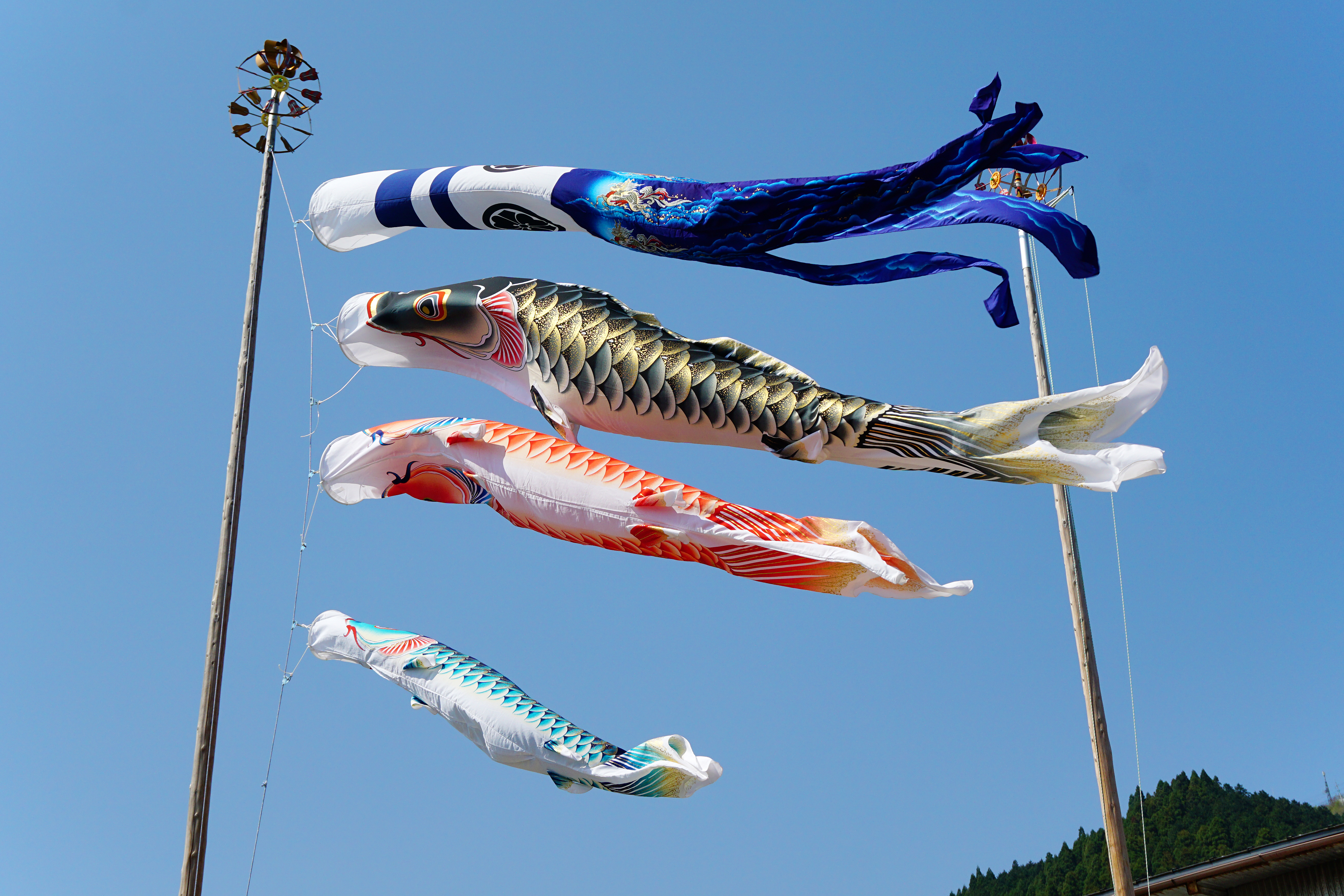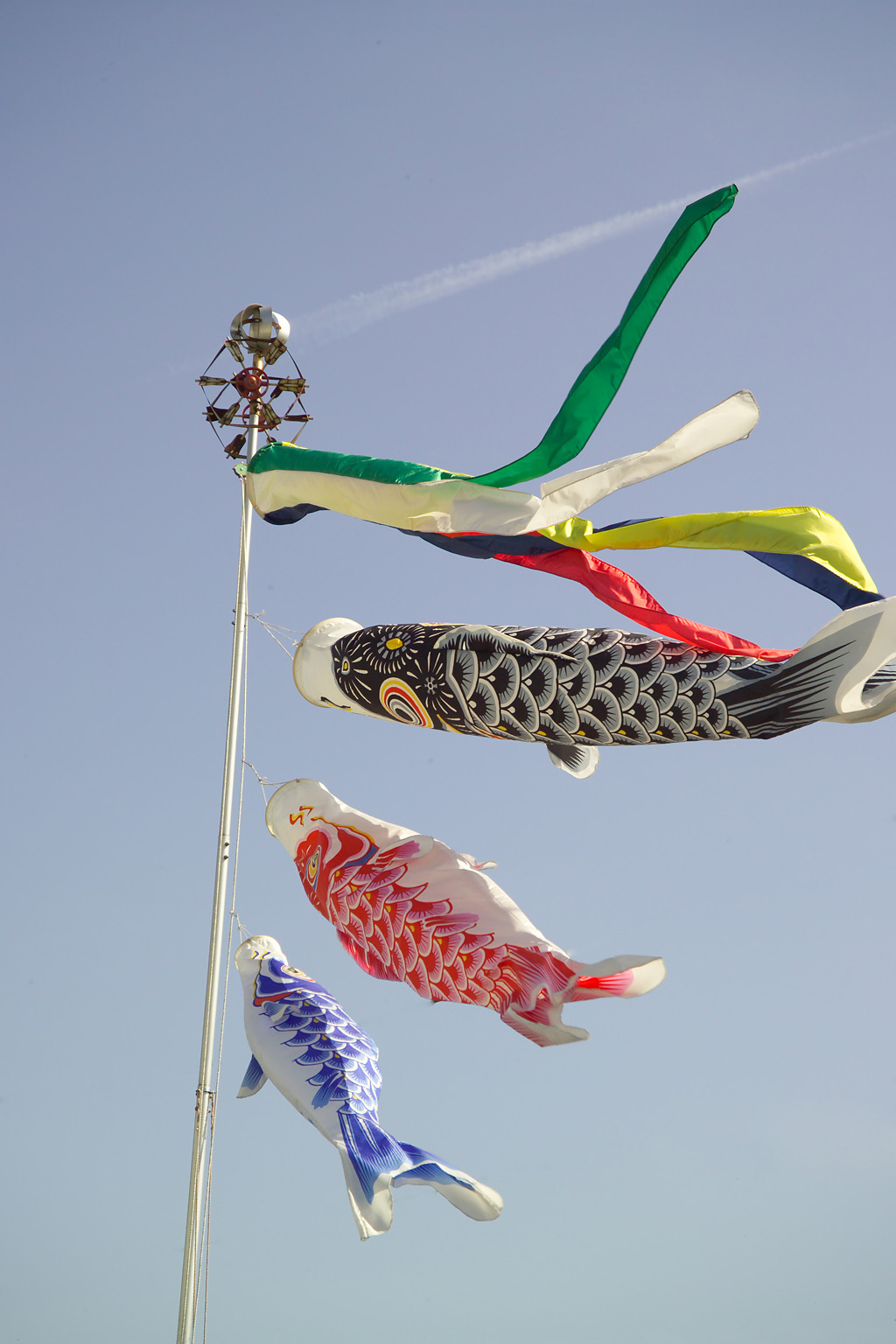π on:
[Wikipedia]
[Google]
[Amazon]


 , meaning "carp streamer" in Japanese, are
, meaning "carp streamer" in Japanese, are


 , meaning "carp streamer" in Japanese, are
, meaning "carp streamer" in Japanese, are carp
Carp are various species of oily freshwater fish from the family Cyprinidae, a very large group of fish native to Europe and Asia. While carp is consumed in many parts of the world, they are generally considered an invasive species in parts of ...
-shaped windsocks traditionally flown in Japan to celebrate , a traditional calendrical event which is now designated as , a national holiday in Japan. are made by drawing carp patterns on paper, cloth or other nonwoven fabric. They are then allowed to flutter in the wind. They are also known as .
Children's Day takes place on May 5, the last day of Golden Week, the largest break for workers and also a week in which many businesses, state schools, and some private schools close for up to 9β10 days for the designated national holidays. Landscapes across Japan are decorated with from April to early May, in honor of children for a good future and in the hope that they will grow up healthy and strong.
The is included in Unicode as .
Description
A typical set consists of, from the top of the pole down, a pair of with a ball-shaped spinningvane
Vane may refer to:
People
* Vane (surname)
* Vane Featherston (1864β1948), English stage actress
* Ivan Vane IvanoviΔ (1913β1999), Yugoslav-British athlete, shipowner, political activist, and philanthropist
* Vane Pennell (1876β1938), ...
, a mounting , and finally the . For the windsock above the , two main kinds are used: the , based on the five elements of Chinese philosophy, and , often featuring a family crest. The number and meaning of the carp streamers or that fly beneath the windsock has changed over time. Traditionally, the set would contain a black representing the father, followed by a smaller, red representing his eldest son. This is why, according to the Japanese American National Museum, in the traditional "children's song," the red one () represents the eldest son. If more boys were in the household, an additional blue, green and then, depending on the region, either purple or orange were added. After the government's decree that converted into the present , the holiday came to celebrate the happiness of both boys and girls. As a result, the red came to represent the mother of the family and it is not uncommon for the color to be varied as pink. Similarly, the other colors and sizes of carp came to represent all the family's children, both sons and daughters.
At present, the are commonly flown above the roofs of houses with children, with the biggest (black) for the father, next biggest (red or pink) for the mother, and an additional, smaller carp of a different color for each child in decreasing order by age.
range from a few centimetres to a few metres long. In 1988, a long weighing was made in Kazo, Saitama.
History
have been in use since the 18th century. Originally exclusive to warrior households, they eventually reached the rest of the population. They were traditionally flown as part of the Japanese Boys' Day, with one carp for each son, while girls found a counterpart to this custom in 'Doll's Day'. However, after the redesignation of May 5th as Children's Day in 1948, some families began flying koi for every child, regardless of gender. Despite this, the connection between the and male children remains, and many families still do not fly them for their daughters. The koi, known for its ability to swim upstream, represents courage, determination, and the hope that children will grow up healthily. This symbolism pays homage to the myth of longmen from the late Han dynasty, that a golden koi fish swam up a waterfall at the end of the Yellow River and became adragon
A dragon is a reptilian legendary creature that appears in the folklore of many cultures worldwide. Beliefs about dragons vary considerably through regions, but dragons in western cultures since the High Middle Ages have often been depicted as ...
.
The number of included on a pole and the variety of their colors have increased over time to accommodate more family members. The nobori where originally made by hand-painting materials such as paper or cloth, but these have almost entirely fallen out of use in favour of synthetics, outside of some rural areas. Silk and paper models are still sold, but at a higher price than the synthetics. Related traditions include kite-flying, kite-fighting, the consumption of Kashiwa mochi (sticky rice cakes wrapped in oak leaves), and, in some areas, the tradition of making young boys crawl through the for good fortune. As a tradition, throughout Children's Day, children also thank and show respect for relatives, parents, and teachers for support throughout their life.Asia Kids Society. (2009). Children's Day in Japan: Kodomo no Hi. Retrieved from http://kids.asiasociety.org/explore/childrens-day-japan-kodomo-no-hi
song
A famous song often sung by children and their families. It was published in in 1932. The lyrics are by Miyako KondΕ (). The composer is unknown.See also
* Dragon Boat FestivalReferences
External links
*{{Commons category-inline Festivals in Japan Japanese-language songs Japanese words and phrases Japanese folk art Articles containing video clips